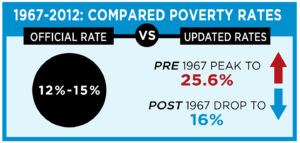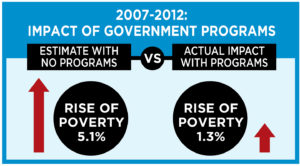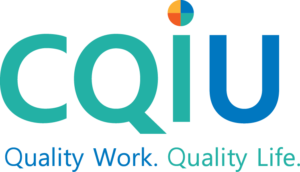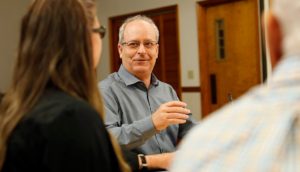The European roots of the United States come from nations that had significant disparity between a small ruling class and the masses, where poverty was typical. Severing political connections to Great Britain, the 1776 Declaration of Independence aspired for equality, although the systems that were created replicated many old patterns. European settlers imagined a boundless wilderness to tame in America and created disparity with indigenous populations. The Industrial Revolution of the mid-1800s followed patterns established by military organizations originally meant to serve the interests of kings and queens. Schools were built to serve agriculture and new industrial enterprises. Today, these systems still resemble early efforts to create a conforming labor pool.
While the Declaration of Independence aspired for everyone to have “life, liberty, and the pursuit of happiness,” the United States has not accomplished the political changes necessary to realize equality. Slavery was not abolished until 1865. Black males achieved the right to vote only in 1870, women the right to vote in 1920, and it took until 1964 to ban segregation in public places and employment discrimination based on race. At present, the United States has one of the world’s highest rates of incarceration. The culture of racism continues to negatively influence who can move out of poverty. White males have approximately a 300-year head start in getting ahead financially. To use a baseball metaphor, if one starts on third base, did they actually hit that triple and deserve all the entitlement associated with the feat?
The American Dream was established on an expectation that hard work could lead to social mobility. With a mantra of “bigger is better,” business leaders have argued against putting any limit on what people might earn, with fear that it will stunt economic growth domestically and push entrepreneurs abroad. Meanwhile, the world’s population has grown approximately 10 times in the past three centuries. Having seven billion people share the Earth challenges the idea of unlimited growth: How can our biosystems be sustained while rewarding unlimited growth and the consumption of the natural world?
The economy that was first installed in the United States did not produce a middle class. The growth of a middle class came from the Homestead Act of 1862 and the Morrill Land-Grant Act of 1862, which made land available for farms and schools; the creation of the Federal Deposit Insurance Corp. that made banking secure for citizens in 1933; the establishment of the Federal Housing Administration in 1934 that made home buying financially safe; the labor policies of the mid-1930s and the Social Security Act of 1935 that provided an array of new benefits and protections to workers; the 1944 GI bill that gave grants to millions of veterans to attend college; and the Pell Grants of 1965 that made it possible for even more people to attend college. Growing up in the 1960s and 1970s, I directly benefited from these policies that produced a strong middle class. In the 1980s, principles of free market enterprise influenced economic development. Financial crises in the 2000s led to a major recession. In recent decades, many policymakers have become concerned about a middle class that is shrinking. To reduce poverty rates, transformational leaders can advocate for policies that serve the majority of Americans.
Reducing Poverty Rates
War on Poverty legislation was introduced in 1964 by President Lyndon B. Johnson, creating programs that became our modern-day social safety net. In 1963-64, a Social Security administrator named Mollie Orshansky devised a poverty rate based on a formula using the cost of a subsistent food budget. Income roughly three times the cost of that food budget was considered to be above the poverty line. The official poverty rates have remained an important longitudinal barometer.
 However, unequal inflation rates for necessities such as healthcare and housing have caused census analysts to create updated calculations known as the Supplemental Poverty Measure and Alternative Poverty Measure. Using these more accurate calculations, researchers at Columbia University calculated these new poverty rates from 1967 to 2012 and compared them to the official poverty rates. While the official poverty rate was stable from 12% to 15%, the updated measures showed that the poverty rate was 25.6% prior to 1967 and has dropped to 16% today.
However, unequal inflation rates for necessities such as healthcare and housing have caused census analysts to create updated calculations known as the Supplemental Poverty Measure and Alternative Poverty Measure. Using these more accurate calculations, researchers at Columbia University calculated these new poverty rates from 1967 to 2012 and compared them to the official poverty rates. While the official poverty rate was stable from 12% to 15%, the updated measures showed that the poverty rate was 25.6% prior to 1967 and has dropped to 16% today.
 Furthermore, researchers compared the updated poverty measures for a five-year time period (2007-2012) with and without government safety-net programs such as U.S. Department of Housing and Urban Development (HUD); the Special Supplemental Nutrition Program for Women, Infants, and Children (WIC); and Temporary Assistance for Needy Families (TANF); and others. Without government programs, poverty rates would have increased 5.1%, but with those programs, poverty rates rose only 1.3%. (For more detailed information, please see the 2016 report by the Office of Human Services Policy, Office of the Assistant Secretary for Planning and Evaluation U.S. Department of Health and Human Services, titled Poverty in the United States: 50-Year Trends and Safety Net Impacts.) While the updated measures are more accurate indications, all metrics reveal information about how many people are financially suffering.
Furthermore, researchers compared the updated poverty measures for a five-year time period (2007-2012) with and without government safety-net programs such as U.S. Department of Housing and Urban Development (HUD); the Special Supplemental Nutrition Program for Women, Infants, and Children (WIC); and Temporary Assistance for Needy Families (TANF); and others. Without government programs, poverty rates would have increased 5.1%, but with those programs, poverty rates rose only 1.3%. (For more detailed information, please see the 2016 report by the Office of Human Services Policy, Office of the Assistant Secretary for Planning and Evaluation U.S. Department of Health and Human Services, titled Poverty in the United States: 50-Year Trends and Safety Net Impacts.) While the updated measures are more accurate indications, all metrics reveal information about how many people are financially suffering.
To inspire a community-wide intention to reduce poverty, Circles USA emphasizes getting children out of poverty as a focus of necessary system changes. Instead of saying, “Let’s get all the children out of poverty right away,” we recommend the goal of supporting 10% of the children out of poverty as a starting place to provoke a tipping point that over time could more quickly help the other 90% out of poverty. Plus, it’s easier for people to withhold judgments about poverty when focused on the innocence of children.
The content for this Blog Series is drawn from the Poverty Reduction Lab program, a collaboration with CQIU. Review the entire series on our Blog. Stay tuned for more about:
- Dismantling the poverty management system,
- Leading your community through the four stages of change, and
- Creating a pathway to end poverty.

To receive subsequent blog posts, sign-up for The Big View Newsletter, our monthly bulletin about poverty research and policy change.
Warm regards,
Scott. C. Miller, Founder and CEO, Circles USA

